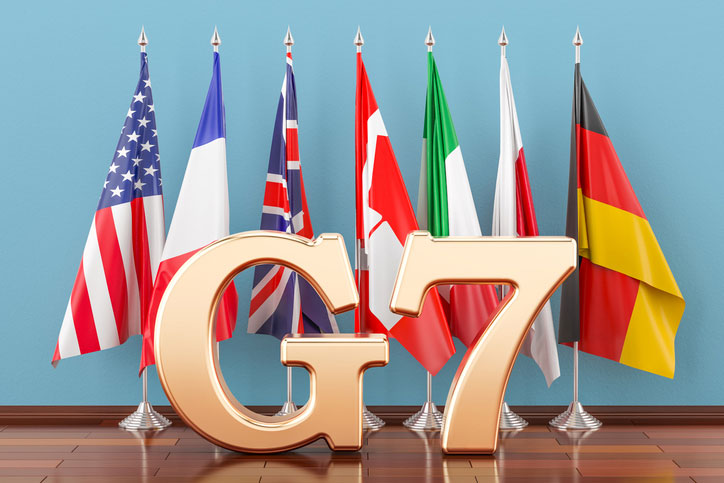
Recently, the G7 summit was held in Germany’s Schloss Elmau on June 26, 2022. The big development that came to the fore this time is the proclamation of a mega project named the Partnership for Global Infrastructure and Investment (PGII), by G7 countries including the US, UK, Canada, France, Germany, Italy, Japan, and the European Union. The launching of this partnership is the continuation of G7’s last year’s scheme, unveiled at the Cornwall summit labelled, “Build Back Better World” (B3W), but in a new package.
The prime objective of both of these initiatives is to become an alternative to China’s globally expanding project, the Belt and Road Initiative (BRI).
All G7 countries have pledged to collectively make a huge investment of USD600 billion for the next five years up to 2027. The US itself will contribute USD200 billion alone. As a countermeasure against China’s BRI, this humongous amount will be invested in developing countries solely to improve their infrastructure. The projects to be funded under the “Partnership for Global Infrastructure and Investment” initiative fall into four broad categories—clean energy, health systems, information and communications technology and gender equality. Major investment in all the above-mentioned projects has been announced below.
First, an investment of $2 billion for a solar project in Angola has been committed. It will cover solar mini-grids, home power kits and solar for powering telecommunications.
Second, $600 million was pledged for a US company which would build a submarine telecommunications cable that will connect Singapore to France through Egypt and the Horn of Africa, delivering high-speed internet. Third, for the World Bank’s Childcare Incentive, funds of $50 million have been announced from the US. This would also be supported by Canada, Australia and numerous other foundations. Fourth, the Institut Pasteur de Dakar in Senegal would get funds worth $3.3 million for the development of an industrial-scale and multi-vaccine manufacturing facility in the country. In partnership with G7 nations and the European Union, this would produce Covid-19 vaccines among others.
The US National Security Adviser Jack Sullivan, who is an important member of this newly launched project stated at a strategic event hosted by the Centre for New American Security last week, that the US-initiated partnership will lay a focus on global infrastructure, physical health, and digital structures which would provide an alternative to what China’s BRI is offering. It will be one of the hallmarks of the Biden administration’s foreign policy over his remaining tenure.
Corresponding to Jack Sullivan’s statement, the Chinese foreign ministry spokesperson, Wang Wenbin also said at a regular press briefing in Beijing that China welcomed G7 efforts to promote global infrastructure development via (PGII) provided that Biden’s initiative was based on a “Zero-sum game approach”.
If a sane and prudent comparison is made between BRI and PGII—BRI stands as a much broader project before this (PGII) initiative. This flagship project (BRI) spans over 71 countries primarily from Asia, Europe, Eastern Africa and the Middle East. The infrastructure corridors in the above-stated regions will cost an estimated USD 4 to 8 trillion that is expected to touch the figure of 30 trillion up to 2035; whereas, the US under PGII is merely intending to deploy a meagre amount of $600 billion to invest in developing countries collectively from the top-7 economies as opposed to spending in trillions from China alone.
According to official data, China had invested USD 139.8 billion by 2020 in BRI projects including USD 22.5 billion alone last year. This includes the BRI flagship project of the USD 60 billion China-Pakistan Economic Corridor (CPEC) in which Beijing has so far invested over $25 billion in December 2021, contrary to the minute amount of USD 2.8 billion that the G7 under (PGII) will invest in the first go, in a few countries.
Unlike PGII’s projects, the projects of BRI are mainly focused on hard infrastructure which includes building bridges, spreading a network of rail and roads, mining, constructing seaports, and laying oil and gas pipelines across Asia, Europe and the Middle East with the sole objective of expediting global connectivity and this is what PGII entirely lacks.
Critically examined, the initiation of such schemes by the US-led G7 is not something unheard of previously. Embarking on the policy of containment of China, the US has always strived to launch projects like B3W and now PGII. It is only China’s rise that has compelled and pressed the US and its allies to announce these initiatives.
It is an undeniable truth that the new world order is rapidly evolving from unipolar to bipolar, which is blatantly countering US unilateralism. Both China’s economic might and Russia’s military resurgence are posing a great threat to US hegemony all over the globe. More than any other resurgent power, China alone, as the second-largest economy in the world, is becoming a rival for the US.
The US has left no stone unturned and has practised all kinds of stratagems to counter China’s rise. The US besides B3W and PGII, also forged military alliances termed AUKUS and QUAD with her allies including India, Australia, Japan and the United Kingdom specifically to diminish China’s influence and hinder its progress in the Indo-Pacific region.
Moreover, in an attempt to get the upper hand over all other economic and social blocs, the G7 nations in their last summit, declared this group as an international society which was later on heavily criticised by China’s foreign ministry spokesperson Zhao Lijian. He said, “a bloc representing merely 777 million of the global population could not dictate global terms as opposed to the BRICS, which represents over 3.2 billion people.”
Thus, it is likely that the G7 bid wrapped in this newly announced initiative of PGII is too frail to counter China’s BRI.
Source: Published in The Nation

